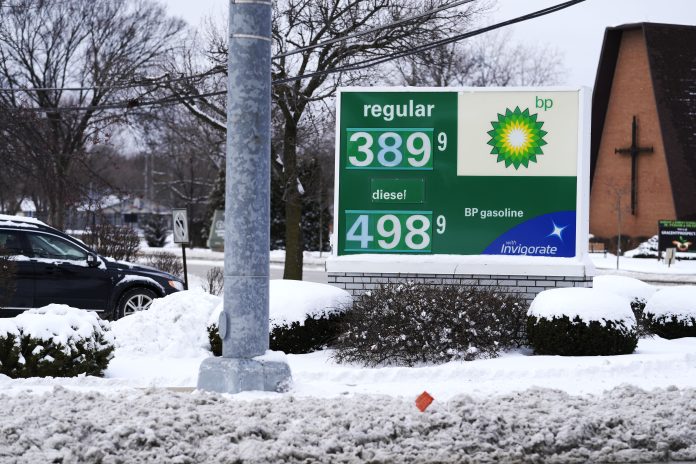With all the factors playing on the energy market, Waco economist Ray Perryman and Permian Basin International Oil Show President Larry Richards are hoping for stability.
But they say you never know what’ll happen next in the oil and natural gas industry.
“The recent price gyrations in the natural gas and other energy markets and other issues have clearly revealed the need for meaningful policy shifts,” said Perryman. “The aftermath of the pandemic and the invasion of Ukraine have shown us that there are challenges in the market.”
Referring to the Biden administration’s March 13 approval of ConocoPhillips’ Willow Project on the North Slope of Alaska, he said, “Moreover, there seems to be a growing realization that there will be substantial demand for oil and gas well into the future as evidenced by the recent approval of the major initiative in Alaska.”
The project is expected to produce 160,000 barrels of oil per day over the next 30 years. With Biden being stringently criticized by environmentalists for the Willow Project, Perryman said the infusion of politics is not helpful.
“While progress toward climate goals is essential, the path forward should be realistic and thoughtful and not driven by political grandstanding on either side,” he said. “Renewables are essential and should be encouraged, but they can’t fill all of the current or future needs even with major technological advances.
“Forecasts from the U.S. Department of Energy and other sources recognize this fact.”
Perryman said an all-of-the-above approach is needed “to support responsible and cleaner development in the domestic oil and gas industry as well as to encourage other forms of energy.
“These should be the parameters for any new legislative and regulatory frameworks,” he said. “The U.S. House bill that was recently filed (the Lower Energy Costs Act) addresses some of these issues.”
Asked if the House can resolve its differences on the bill, Perryman said, “That’s always very difficult to predict.
“I do my best to stay out of politics, but because of the unique issues in many individual districts, it appears likely that at least some changes will be forthcoming and it is worth noting that it is unlikely that a bill of this nature could garner 60 votes in the Senate,” which is what would be required to override a filibuster.
“Unfortunately, politics too often focus on either-or rather than all, which is what is really needed.”
Perryman reported seeing projections of $130 per barrel oil this year but said that looks unlikely.
“There are always forces in motion that can quickly move prices in either direction,” he said. “At this point when examining all the factors, it is difficult to see a price at that level and certainty not on a sustained basis.
“China’s economy is getting to a more normal state after COVID-related shutdowns, which will certainly boost demand for oil. At the same time, however, there are signs that many other major economies around the globe are slowing. This overall slowing will in turn affect China’s exports and economic growth.”
The economist noted that there are signs of a slowdown in the United States and that recent disruptions in the banking industry with the failure of Silicon Valley Bank in Santa Clara, Calif., have contributed to depressing oil and gas prices.
“Recognizing that anything can happen at any time to push oil prices in either direction, the most likely course at this point is to remain in the recent and relatively wide trading range of $60-$85 per barrel.”
The price of West Texas Intermediate crude oil was $68.80 per barrel Tuesday while natural gas was $2.167 per thousand cubic feet after hitting $9.85 last Aug. 22.
Richards said he “would be very surprised to see oil prices over $100 this year and I hope we don’t have them.
“Like low prices, overly high prices aren’t sustainable and both drive bad behaviors that hurt our industry,” he said. “I expect energy demand from China and the rest of the world to increase over the next 12 months, but I believe we’ll see oil supply from OPEC and the U.S. rise to meet it.
“If you want to know what oil price is needed to have a robust domestic industry, we’re living it. Most American oil basins require at least $60 to $65 per barrel to be commercially viable, especially if we plan to continue improvements in methane capture and employee safety.
“At today’s $70, new drilling is viable and profitable in U.S. basins while gasoline prices at the pump are reasonable for U.S. consumers.”
Richards said most oil-producing nations can meet their budgets with $70 oil and have the necessary resources to produce oil safely with minimal emissions.
“Politicians want to suggest that opening more land to drilling will somehow drop oil prices to $25 a barrel,” he said. “It’s simply untrue. There isn’t a single basin in the U.S. that’s commercially viable to produce at $25 a barrel.”




